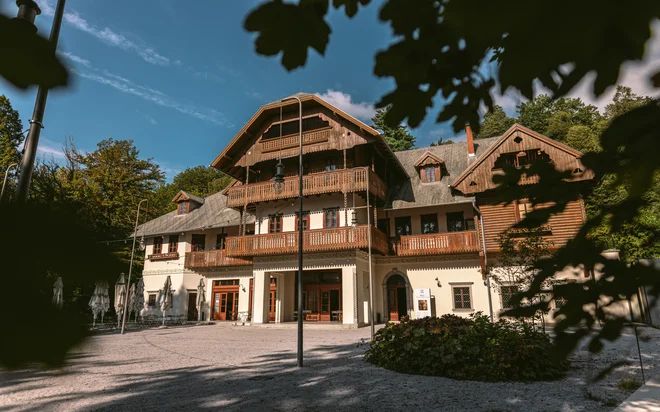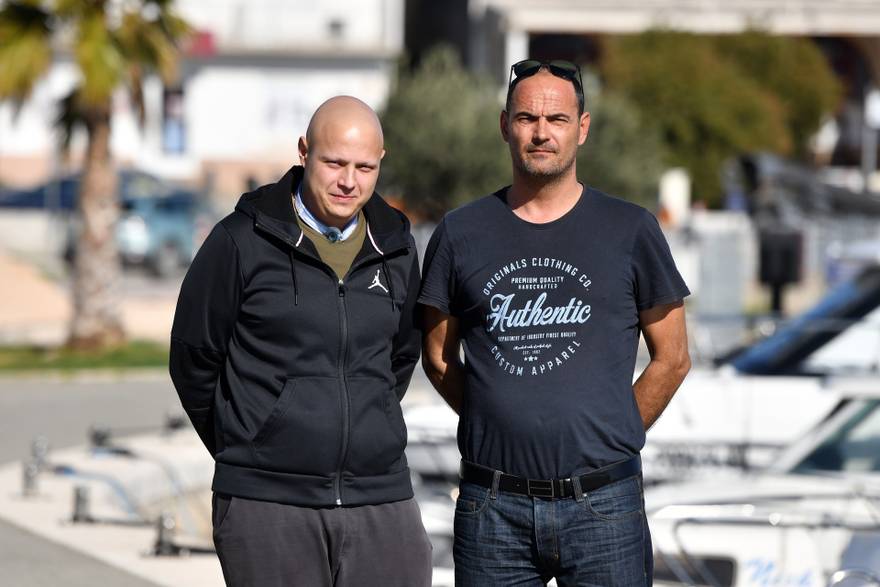Painting a human essence with blood
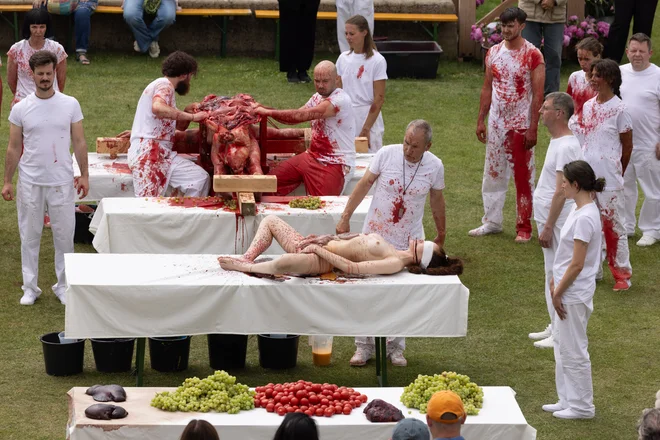
The Orgial and Mysteries Theater, which was started by Austrian actionist artist Hermann Nitsch (1938–2022) with the first campaign in December 1962, on Monday landed at its end: the Prinzendorf Castle was staged the last three days of its biggest project, Six -day gameswhich was only fully implemented in the summer of 1998. They reported from the artist’s fund that there would never be repeated.
The three -day decision of the project, whose first repetition was staged in 2022 (first and second day) and 2023 (third day), were responsible for the artist’s widow of Rita Nitsch, the Posinhoven Leonhard Kopp and Frank Gasser as a director, as the leader of the music work by the former Nitsch Assistant Andrea Cusumano. About one hundred performers, nearly thirty members and a ninety -member orchestra, reinforced by the section of bells and gongs, participated, about four hundred spectators attended each day.
A ritual score
The beginning of the first day was served with all the instrumentaries typical of Nitsch: tables were arranged in the castle yard, with octopus, fish, bread loaves, various vegetables and fruits, and especially offal. In the wooden trough, the pig was surrounded by tomatoes, grapes, flowers, dyes from the so -called castle pharmacy senses and quite a bit of offices.
I tried to write a six -day primary drama that would thicken in one ancient tragedy, Shakespeare, Faust, Kleist and Wagner, wrote Hermann Nitsch.
When the players or participants, as Nitsch called them, were ritualized by the cold frowning of all these ingredients, which – as Nitsch’s nephew said, were told by the wild, frenetic kneading, tearing and sinking around the tables abundantly watered with cow. The oddly bleeding, the smell of a stubborn offal and blood, which has spread quite quickly throughout the scene, and also burdened with anxious, apocalyptic loud music of the ninety -member orchestra, tried to mitigate church incense. It didn’t help much.
Bloody corporate artwork
The events at Prinzendorf Castle, which Nitsch bought in the early 1970s and became the venue The ritual, who wants to say something with the drasticity and brutality of the experience (some connoisseurs on the scene have hinted that there are quiet echoes of the poetics of the cruelty of Antonin Artaud) in Nitscha’s games). The artist himself was very clear in one of the preserved records: I tried to write a six -day primal drama that would thicken into one ancient tragedy, Shakespeare, Faust, Kleist and Wagner.
In a conversation for the Modern Gallery newspaper M’ers Nitsch said in the early 1990s: “What I would like to do is actually a new form of corporate art. The most important achievement of my work with the theater is that it is no longer spoken in it, no longer playing … ”Thus, everyone was silent, a girl who, like a kind of altar with a cross, was tied to a dissolved pig cadaver and pouring into the blood, a naked girl who put her octopus on the genitals and then poured her blood. the pounds of offal, tomatoes and fruits and was also abundantly watered with blood chives, a naked bride who carried an empty monstrance before the procession.
Brutal theater without words
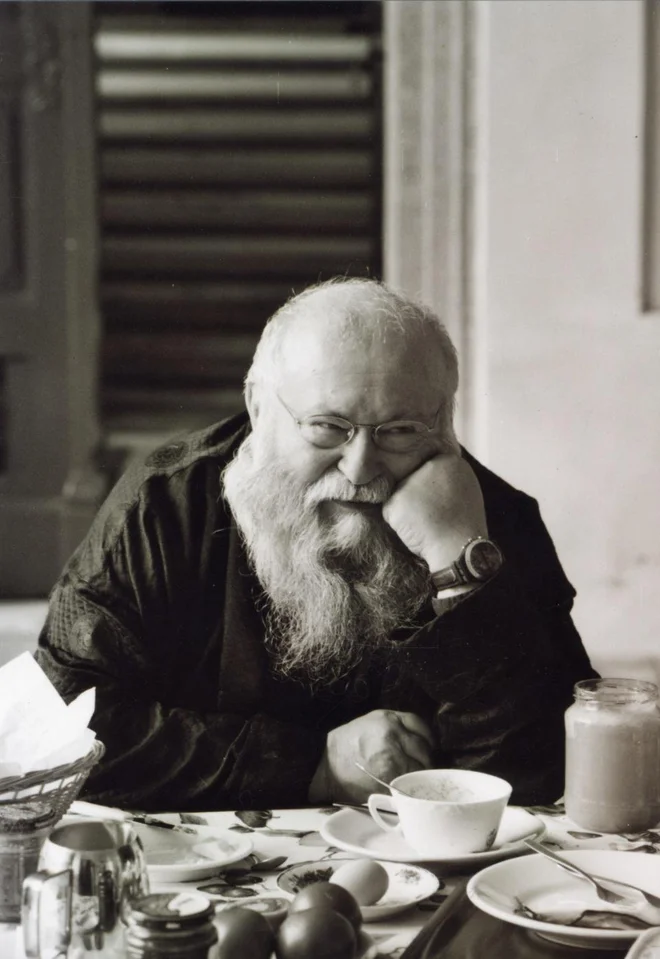
Hermann Nitsch is considered one of the beginners of Vienna’s action. Photo by Erika Schmid
Nitsch is his informal, action with ecstatic fusion of red into painting surfaces in the early 1960s, thinking that « nothing can replace action », soon moved into space, but no longer operated on painting paint, but – as he wrote in the mid -1980s (the Slovenian translation of the theater was published in the Catalog. In 1992) – “crushed fruits, mixed yolks, raw wet meat, blood, bloody water, slaughtered sheep. (…) I achieved the end point of analytical dionysical response with a basic sadomaso -chessive experience, with a sheep torn. ”Nitsch is considered to be the originator of Vienna Actionism, among the main representatives of this artistic direction include Günter Brus, Otto Muehl and Rudolf Schwarzkogler.
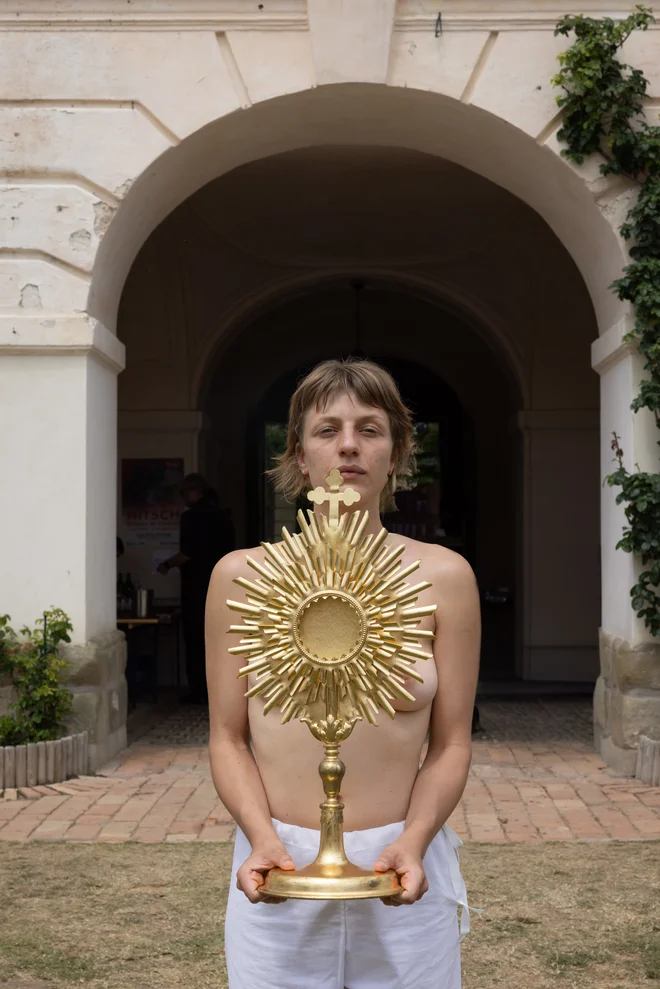
The Šetnadna game is served with quite a few elements of church iconography. Photo Esel Lorenz Seidler
Again, in Prinzendorf, it was more than obvious that Nitsch’s theater was something unique, the orgic-mysterical theater offers a long sequence of scenes without text. Despite the expense of the part of the protagonists, a series of related events of a six -day game does not summon erotism or simple animality at least in the fourth and fifth days, everything seems to be subordinate to the rite, in fact it is a capture in endless ritual, liturgical similar patterns.
With them, Nitsch did not want to be political, but wanted to shock the audience, but not quite so, with a regular provocation, but otherwise: « I wanted to shake viewers and participants in terms of Aristotle and Artaud. I wanted to achieve an intense dramatic effect that would work deeply to the roots of our stay. ”This time of the repetition of the last part of the six -day game, tolerant spectators participated, completely different than in 1998, when the start of the event was disturbed by voice protesters, animal rights and church advocates, bombings and considerable media linch.
The most sublest form of reality
Viewers of Nitsch’s theater, in addition to observing, forcibly to smell, taste, touch, so it is multisensorory, he wants the show and thus the essence of the viewers to intensively understand with different senses. Nitsch was aware that his dionysical, drastic, very literally bloody actions that initially upset the Austrian cultural scene, on -call moralists and the church and gave him a three -time prison sentence, arousing discomfort.
In conversation with Rudolf Stoert (published in the magazine KunstforumSlovenian translation in The artistic words January 1992) Nitsch said: “I would still like to withdraw to primitive sensationalism. I know this one exists in my campaigns, but I would like to do something from that. I would like the energies to relax and pass into life to transform into the highest form of life. It was the most sublime form of reality. ”Nitsch was convinced that all the problems he experienced was the presentation of his works by the public, the result of seeing the public in them » saw the abyss of its depths, its magnificent and at the same time cruel, horrific truth, its monstrous reality. «
The Austrian artist said about the uncommon of his projects: “It seems to me that I would no longer use the words directly, but only indirectly. I wanted to confront the participants of my games with the directness of their environment, in fact I wanted to rule out the word. With the situations of today, I wanted to say that words overlap things. «
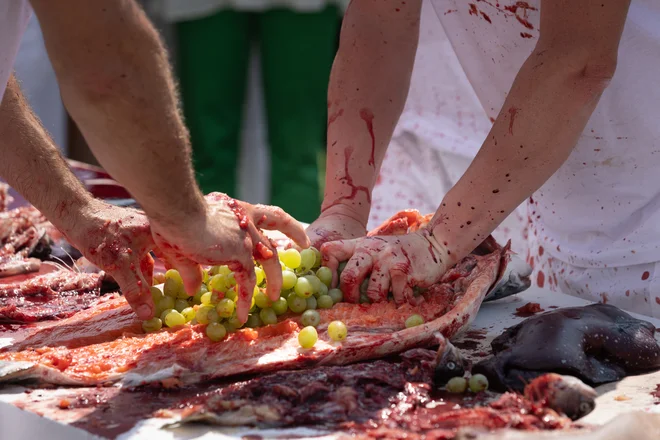
During wild kneading, tearing and tossing, the components of the ritual are abundantly watered with cow or pig blood.
Nitsch added about music: « My first compositions, they were related to actions, were entirely music music, now this music is a little more classic, but the noise is still organized, only the color of the sound is much more important now; Nevertheless, the scream is still the origin of my music. My music was not illustrative in any way, the participant of the campaign is supposed to pull behind him, to escalate the orgiastness of the actions, and on the contrary, the action itself gives the spirit to music, pulling it behind. Both are mutually needed. My music is a very sensual feeling of noise, sounds. ”Of course, because of many crescends, they also offered silicone earplugs at the entrance at the entrance this time.
Last year, members of the Hermann Nitsch fund opened the Museum of Actionism in Vienna, which features several Nitsch works, in Mistelbach near Prinzendorf since 2007, the Nitsch Museum, whose currently erection with seven stations, which explained the main phases of his artistic path, signed Karlheinz Essl, similarly founded in 2008 in Naples. Giuseppe Morra collector. Nitsch’s works are kept in the collections of the New York Museum of Modern Art and the Metropolitan Museum, the Tate Gallery of London, at the Paris Pompidou Center, and numerous Austrian and German museums of contemporary art.



